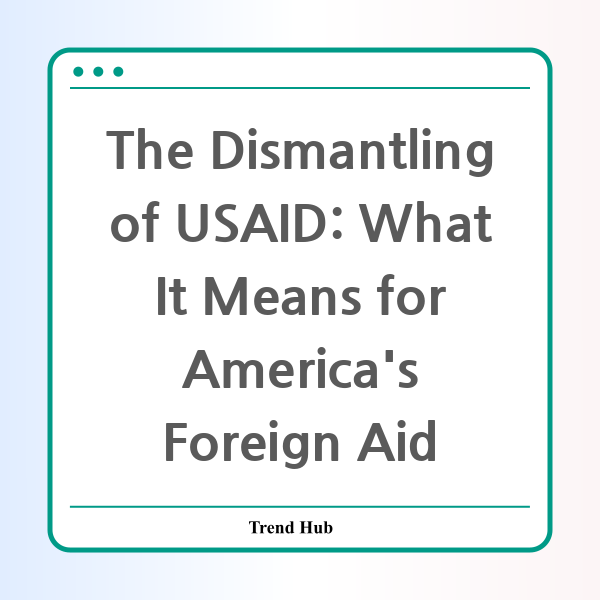* This website participates in the Amazon Affiliate Program and earns from qualifying purchases.

Is the end of USAID the dawn of a new era in American foreign aid?
The recent announcement by the State Department about dissolving the United States Agency for International Development (USAID) marks a significant shift in the U.S. approach to foreign assistance. This move, which will see many of USAID's functions absorbed into the State Department by July 1, is part of the Trump administration's broader strategy to realign foreign aid to better serve American interests.
USAID has been a crucial part of America's soft power, traditionally focusing on alleviating poverty and hunger globally. However, the Trump administration has argued that the agency had deviated from its mission, questioning its efficiency and alignment with U.S. priorities. This shift raises critical questions about the future of humanitarian aid and America's role in global development.
The Reasons Behind the Dissolution
According to officials from the Trump administration, USAID strayed from its original purpose, leading to wasteful expenditures without achieving significant results. They maintain that the new foreign assistance model will prioritize national interests, security, and cost-effectiveness. Key elements of this plan include:
- Streamlining Functions: By moving functions to the State Department, the administration aims to eliminate duplication and improve efficiency.
- Focus on Strategic Interests: The reorganization emphasizes programs that protect American borders and enhance partnerships with key allies.
Critics, including former USAID employees and humanitarian experts, argue that this approach threatens vital support for global emergencies and undermines America's influence abroad. They assert that while USAID had its flaws, it played an essential role in disaster relief and development work worldwide.
The Legal Implications
Legal challenges are expected as the restructuring has not included Congressional approval, raising concerns over the legality of dissolving an agency created by Congress. Aid groups and employees are already mobilizing to contest these changes, emphasizing the potential humanitarian implications.
Moreover, the 4th U.S. Circuit Court of Appeals recently upheld the administration's dismantling decision, indicating that while the judiciary may eventually intervene, the current plan will proceed for now.
What Does This Mean for Future Aid?
The focus will shift towards a more targeted approach in foreign assistance, with an emphasis on life-saving programs that align with the administration’s priorities. This includes:
- Humanitarian Assistance: Continued support for crisis situations.
- Global Health Functions: Investment in health initiatives that benefit both U.S. interests and affected populations.
- National Security Programs: Aligning aid more closely with security interests.
As the dust settles on this major shift, the long-term impact on U.S. global presence and humanitarian efforts will become clearer. Will this transition lead to a more focused and effective foreign assistance strategy, or will it compromise America's role as a leader in global humanitarian efforts?
As the restructuring progresses, stakeholders must advocate for a balance that ensures both efficiency and compassion in U.S. foreign aid policy.
* This website participates in the Amazon Affiliate Program and earns from qualifying purchases.